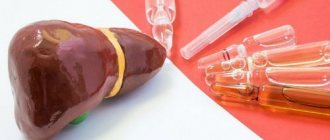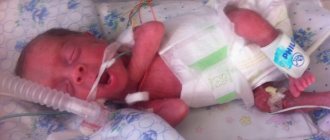- home
- Treatment of cancer (oncology)
- Sarcomas
- Kaposi's sarcoma
—
—
—
Kaposi's sarcoma is expressed in multiple malignant skin lesions; neoplasms can also be localized on the mucous membranes of the oral cavity and in the lymph nodes. Almost all patients are diagnosed with herpes virus type 8, so it is considered one of the main causes of tumors. The disease has several varieties of different etiologies, but most often this malignant disease, expressed in the appearance of multiple nodes, is associated with HIV and AIDS (epidemic form) - it affects about half of patients with acquired immunodeficiency. Homosexual relationships in men and frequent changes of partners increase risks.
Such tumors can also develop in people with organ transplants, mainly kidneys, which are forced to suppress natural immunity to reduce the risk of rejection, in men over 50 years of age from Eastern Europe and the Mediterranean, and in people from equatorial Africa.
Hospitalization of cancer patients. Daily. Around the clock
9,500 patients trust us annually.
Call your doctor now!
Classification of Kaposi's sarcoma, symptoms and diagnosis
The disease usually manifests itself as multiple purple or bluish spots of irregular shape, but their location differs:
- The AIDS-related epidemic variant affects the face (tip of the nose, eyelids), gums, ears, inner surface of the shoulders and thighs, and metastasizes to internal organs;
- with the classic type, which affects Europeans, bluish-red spots resembling a hematoma appear mainly on the legs (feet and legs) and hands;
- endemic (African) sarcoma is more often diagnosed in children, mainly under one year old, and young people. It affects not the skin and mucous membranes, but the deep layers of the dermis, subcutaneous tissue, muscles and bones;
- The immunosuppressive type of the disease is similar in its manifestations to AIDS-associated, however, unlike the previously mentioned types, when the immunosuppressive drugs are discontinued, the disease usually recedes (a relapse is possible when returning to the drugs).
The affected tissues bleed, their functioning is disrupted - for example, damage to the mucous membranes in the oral cavity, characteristic of the epidemic type, interferes with food intake, if the process affects the digestive system, appetite is disrupted, sudden weight loss is observed, shortness of breath, cough, and hemoptysis appear in the respiratory organs. We list the stages distinguished in classical Kaposi's sarcoma:
- spotted - irregularly shaped spots up to 5 mm;
- papular - compacted formations up to 1 cm in diameter;
- tumor - single and multiple nodes up to 5 cm, prone to ulceration.
To establish an accurate diagnosis, biopsy and histological studies are used to clarify the diagnosis. They also conduct tests for HIV and AIDS; ultrasound, MRI, CT, gastroscopy, radiography and other methods are used to identify tumors of internal organs.
Causes
This disease is not very common among the population, but in HIV-infected people, especially men, it occurs in almost half of the cases. The reasons that cause the appearance of such neoplasms are not known for certain. But scientists with a high degree of probability suggest that the disease can develop against the background of human herpes virus type 8, which itself has not yet been sufficiently studied.
Kaposi's sarcoma also often accompanies other malignant processes, including:
- mycosis fungoides
- Hodgkin's lymphoma (lymphogranulomatosis)
- lymphosarcoma
- multiple myeloma
- leukemia
For pathology to occur, a significant decrease in human immunity due to various reasons is necessary. In addition, some groups of people have a much higher risk of developing Kaposi's sarcoma than others. For example, the disease is more often observed in men than in women. The risk group includes: HIV-infected persons, elderly men belonging to the Mediterranean race, persons whose homeland is equatorial Africa, persons with organ transplants from donors (especially kidney ).
Book your room today
6 seats
1 local ward
- 4 meals a day
- Bathroom in the room
- Anti-decubitus mattresses
8200 rub.
Book
13 places
2 local ward
- 4 meals a day
- Bathroom in the room
- Anti-decubitus mattresses
5700 rub.
Book
2 seats
VIP chamber
- a guest room
- 4 meals a day
- Bathroom in the room
- Anti-decubitus mattresses
17700 rub.
Book
6 seats
1 local ward
- 4 meals a day
- Bathroom in the room
- Anti-decubitus mattresses
8200 rub.
Book
13 places
2 local ward
- 4 meals a day
- Bathroom in the room
- Anti-decubitus mattresses
5700 rub.
Book
2 seats
VIP chamber
- a guest room
- 4 meals a day
- Bathroom in the room
- Anti-decubitus mattresses
17700 rub.
Book
Endemic (African) type
Along with the AIDS-associated type, it is the most common tumor in Central Africa. Occurs in adults and children. The ratio of men to women varies from 3:1 to 10:1.
There is a benign , nodular type of the disease, which occurs in adults, and in its clinical picture and course is not different from Kaposi's sarcoma of the idiopathic type, as well as fulminant , lymphadenopathy, affecting mainly children, accompanied by a high frequency of damage to the lymph nodes, internal organs, bones, and minimal skin manifestations and death after 2-3 years.
The average life expectancy of patients varies from 6 to 26 months.
Reviews
30.09.2021
Feedback on the treatment of ovarian cancer at the NACFF clinic
07.09.2021
NACFF patient about treatment, quick examinations and attentive attitude
03.09.2021
I have healed again, I have been born again
10.08.2021
Treatment of multiple fractures and traumatic brain injury
View all reviews
Hospital, hospitalization, emergency medical care - 24/7, 7 days a week
+7 (495) 259-44-44
Immunosuppressive (iatrogenic) type
This type of Kaposi's sarcoma is caused by exposure to immunosuppressive (immune suppressive) drugs used to prevent the rejection of transplanted internal organs, or immunosuppressive therapy for chronic diseases.
This type of sarcoma occurs in relatively young people (35-50 years old). The ratio of men to women is 2:1. The tumor is diagnosed on average 30 months after the start of immunosuppressive therapy.
The immunosuppressive type of Kaposi's sarcoma is characterized by severe disturbances in cellular and humoral immunity.
On the other hand, with this type of disease, the functional activity of the immune system remains, which may explain the spontaneous disappearance of tumor manifestations after cessation of immunosuppressive therapy.
Skin manifestations with this type of Kaposi's sarcoma are initially quite limited (the lower extremities are less often affected), but then quickly become widespread, involving the mucous membranes, lymph nodes and internal organs, which can lead to death.
Pathological anatomy
Usually the tumor is purple in color, but the color can have various shades: red, purple or brown. The tumor may be flat or slightly raised above the skin and appear as painless spots or nodules. Almost always located on the skin, less often on internal organs. Kaposi's sarcoma is often combined with damage to the mucous membrane of the palate and lymph nodes. The course of the disease is slow. The discovery of Kaposi's sarcoma in HIV infection provides grounds for the diagnosis of AIDS.
The histological structure of the tumor is characterized by many chaotically located thin-walled newly formed vessels and bundles of spindle cells. Tumor infiltration by lymphocytes and macrophages is characteristic. The vascular nature of the tumor sharply increases the risk of bleeding. However, a biopsy is not necessary if Kaposi's sarcoma is suspected. Kaposi's sarcoma is a special type of tumor that often does not require not only verification of the diagnosis, but also its treatment. This may seem strange at first glance. This situation is due to the fact that an accurate diagnosis can be made without a biopsy, and isolated treatment of Kaposi's sarcoma extremely rarely gives complete healing.
Moreover, treatment of Kaposi's sarcoma (due to its connection with the causative factors of the underlying disease) is usually palliative, that is, aimed only at reducing the symptoms of the disease.
Treatment of Kaposi's sarcoma with radiation therapy
Head Department of Radiation Therapy, radiation therapist Oleg YARMAK .
A 56-year-old man (nationality: African American) came to the clinic with complaints of a significant increase in the size of his left leg, bursting pain, limited movement of the left leg, multiple oozing formations of the left thigh and foot.
Diagnosis: Kaposi's sarcoma of the left lower limb, stage. 3, T4N2Mx, class gr. 2. (lymphadenopathy of the left groin area, significant lymphostasis of the left leg).
Concomitant diagnosis: Chronic hepatitis C, remission stage.
Disease history. At the time of contacting the doctor, the patient considered himself sick for 10 years. Two years earlier, he had undergone a course of monochemotherapy (bleomycin). The treatment turned out to be ineffective.
The patient underwent additional diagnostics, in particular, a computed tomography (CT) scan without contrast enhancement was performed. CT images revealed a mass formation in the lower third of the left leg, as well as MTS lesions in the regional lymph nodes of the left popliteal fossa and the left groin area.
Based on the results of the clinical examination and diagnostics, a decision was made to conduct radiotherapeutic treatment (IMRT radiation therapy), and a treatment strategy was developed.
Planning, treatment and outcome
Contouring of critical organs, affected groups of lymph nodes and the tumor itself (GTV) was performed, taking into account its prevalence and soft tissue invasion.
5 weeks after treatment, the patient noted a significant improvement in his general condition, he was not bothered by pain, his left leg was significantly reduced in size, the oozing formations had dried up, and there was no discharge.
Visually, the results of radiation treatment 5 weeks after therapy are visible in the photo below. According to the results of CT diagnostics, significant positive dynamics were noted due to a decrease in infiltration of leg tissue and a decrease in its volume, respectively, as well as due to a decrease in hyperplastic inguinal nodes.
Description and causes of the disease
The pathology is oncological in nature and affects the outer layers of the epidermis. The causes of the pathology are functional changes occurring in the vascular and lymphatic network, which has exits to the skin. There are cases when the disease spreads to the oral mucosa.
The mechanism for the spread of the anomaly in medical practice has not yet been determined, but it has been noted that patients with critical pathologies of the immune system (in AIDS), affected by the herpes virus of the eighth type, who have suffered from oncology of other organs and internal systems, are susceptible to the disease.
Symptoms
The clinical picture of Kaposi's sarcoma is quite varied and depends on the duration of the disease.
In the initial stages, the symptoms of sarcoma appear as reddish-bluish spots of varying shapes and sizes, as well as pink nodule-like elements, which then acquire a bluish color. As Kaposi's sarcoma progresses, the rash takes on the appearance of nodular infiltrated elements of a reddish-bluish color of various sizes. These nodules tend to merge, which leads to the formation of large lumpy foci with sharply painful ulcers. In the area of the outbreak, the skin is thickened, swollen, and purple-bluish in color. The lesions are mainly localized on the skin of the distal extremities (in 94% on the lower extremities - the anterolateral surfaces of the legs and feet) and tend to be located near the superficial veins. Often there is symmetry of the damage to the extremities.
According to its course, the tumor can be subacute, acute and chronic. The acute course of Kaposi's sarcoma is characterized by rapidly progressive symptoms and is manifested by generalized skin lesions in the form of many nodular formations on the trunk, face and limbs, as well as fever. These symptoms are accompanied by damage to internal organs and/or lymph nodes. The duration of the acute form is from two months to two years.
In the subacute course of sarcoma, generalization of skin rashes is observed much less frequently. The chronic course is characterized by gradual progression of skin rashes in the form of plaques and macular-nodular elements. The duration of the chronic form is eight years or more.
Pathogenesis
The oncological process leads to the formation of a tumor that has a histological structure with many randomly located thin-walled newly formed vessels with dilations of capillaries and plexuses of bundles of spindle-like cells. Infiltration of macrophages and lymphocytes is observed in the tumor. Due to the vascular nature of the tumor, there is an increased risk of bleeding and hemosiderin .
Tumor multicentric growth from angioblastic mesenchyme begins with activation of herpesvirus 8 in conditions of immunodeficiency caused by HIV infection , old age, drug immunosuppression after transplantation , malaria or other chronic infections and infestations in Africans. As a result of the changes, normal endothelial cells are transformed into malignant ones. Tumor growth is caused by disturbances in the regulation of the cell cycle and is associated with the viral cyclin D , viral IL-6 and others present in herpes viruses. Angiomatous lesions have an inflammatory, granulomatous and tumor stage.
Complications
The occurrence of complications of Kaposi's sarcoma depends on the stage of development of the disease and the location of the tumors. The following complications may occur:
- lymphatic edema, elephantiasis due to compression of the lymph nodes;
- bacterial infection of damaged tumors;
- limitation of motor activity of the limbs and their deformation;
- bleeding from disintegrating tumors;
- intoxication of the body caused by the breakdown of tumors;
- disruption of the functioning of internal organs when tumors are localized on them.
Some complications lead to life-threatening conditions.
What examination can the doctor prescribe? How is the diagnosis made?
If a patient has HIV/AIDS and has characteristic spots on his skin, the doctor may suspect Kaposi's sarcoma. The final diagnosis is made after a biopsy. During laboratory tests, human herpesvirus type 8 protein – LANA –
(
latency-associated nuclear antigen
).
To diagnose lesions of the digestive and respiratory systems, endoscopic examinations are prescribed.
Diagnostics
Diagnosis of Kaposi's sarcomatosis is carried out by an infectious disease specialist, dermatologist and oncologist. First, doctors listen to the patient and collect anamnesis, and then:
- Check for signs of disease.
- They do a biopsy.
- A histological examination is carried out to detect the proliferation of fibroblasts.
- Conduct immunological studies.
- Blood is taken for HIV testing.
The patient is also prescribed additional tests, for example, ultrasound, radiography, gastroscopy, CT scan of the kidneys, MRI of the adrenal glands and others to identify internal lesions.
Prevention
The main measure to prevent the disease is timely and correct treatment of immunodeficiency conditions. Thus, the use of antiretroviral drugs in HIV-infected patients allows for a long time to maintain the normal function of the immune system, thereby preventing the appearance of Kaposi's sarcoma.
After treatment of Kaposi's sarcoma, a thorough examination of the skin and mucous membranes is necessary at least once every 3 months, assessment of the condition of the lungs and gastrointestinal tract - at least once every six months or a year. These measures will help to detect relapse of the disease in time.
Local treatment of skin manifestations of angiosarcoma
Kaposi's sarcoma cells respond to radiation exposure, so external beam radiation therapy or x-ray therapy are actively used; their use is limited only by a large affected area.
A good result is achieved by introducing cytostatics of plant origin - pink vinca alkaloids - into the tumor node.
In the literature, there are indications of a positive effect with the local use of retinoids, as well as shock wave therapy on lesions and even compression stockings for the development of a tumor against the background of lymphatic edema of the limb.
The initial stage of Kaposi's sarcoma - how does the disease manifest?
What signs may indicate Kaposi's sarcoma? The disease primarily manifests itself in the form of spots on the skin, which can range in color from pink-red to dark blue. These are usually flat, painless spots that do not lighten, meaning they do not turn white when pressed on. Kaposi's sarcoma spots are usually not life-threatening, but rather cause cosmetic problems, especially if they appear on the face.
However, over time, the marks of Kaposi's sarcoma can spread throughout the body, which is why the disease is also called “multiple soft tissue sarcoma.” Kaposi's sarcoma spots in the mouth can make eating difficult and may be painful. Over time, Kaposi's sarcoma can also affect the digestive system, especially the intestines, which can lead to pain, diarrhea, and bleeding.
It is not uncommon for the disease to develop into a pulmonary form, causing breathing problems. If the pulmonary and intestinal forms of Kaposi's sarcoma are not treated, it can be life-threatening.
AIDS-associated (epidemic) type
This type of Kaposi's sarcoma develops in conditions of severe immune deficiency and affects young people (on average 38 years), usually homosexual men.
Early lesions on the skin are characterized by small bright pink or bluish spots, similar to insect bites, dense brownish or reddish nodules, which can develop into ulcerated and painful nodules. Tissue swelling can occur in the area of the extremities, scrotum, penis, face, eyelids.
Important clinical features of the AIDS-associated type of Kaposi's sarcoma are: primary lesions of the face, mucous membranes and upper extremities. The favorite localization of the pathological process is the tip of the nose and the hard palate.
If left untreated, this type of sarcoma is characterized by rapid spread of skin rashes.
In 75% of patients, internal organs are affected, primarily the stomach and duodenum, as well as the lungs. Less commonly, the liver, spleen, adrenal glands, pancreas, testicles and very rarely the brain are affected.
Only in 5% of patients the disease occurs without skin lesions. Death is more often associated with other manifestations of AIDS rather than with Kaposi's sarcoma.
Treatment
The choice of treatment depends on the type of Kaposi's sarcoma and the clinical course of the disease.
Radiation therapy can be successfully used in the treatment of patients with single tumor elements in all types of sarcoma. In this case, the total radiation dose is 30-40 Gray.
For limited lesions, the following are used: surgical method , cryotherapy with liquid nitrogen , photodynamic therapy , intratumoral administration of drugs .
In the chronic form of the idiopathic type of Kaposi's sarcoma with widespread rashes, treatment should be combined with the use of antitumor drugs and interferon.
In the subacute form of the idiopathic type of sarcoma, the use of interferon .
Therapeutic tactics for the immunosuppressive type of the disease are based on the maximum possible reduction in doses or complete abolition of immunosuppressive drugs, the prescription of interferon or antitumor drugs (as indicated).
For AIDS-associated Kaposi's sarcoma, antiretroviral drugs (zidovudine, stavudine) are used, which in the early stages of the disease (up to 8-12 weeks) can lead to the disappearance of the manifestations of the disease.
If such therapy is ineffective, as well as in later stages of the disease, antitumor drugs are used
Diagnosis of the disease
Diagnostic measures to determine the disease are based on clinical data. However, in difficult cases, some additional research methods may be used:
- diagnostic procedures to detect HIV - the disease in a large number of cases occurs together with this type of cancer;
- blood examination to determine human herpesvirus type 8;
- examination of tissue samples to verify the diagnosis using histological techniques;
- the use of imaging diagnostic methods to determine the spread of cancer foci: ultrasound screening, magnetic resonance imaging examination.
Diet for Kaposi's sarcoma
Diet to boost immunity
- Efficacy: therapeutic effect after 3 weeks
- Terms: 1-3 months or more
- Cost of products: 1600-1800 rubles. in Week
The health of each person depends on a normal, balanced diet, and if the body’s immunity is reduced or an infectious process develops, then it is better to adhere to the following recommendations:
- It’s best to choose lean meats and don’t forget about eggs;
- enrich the diet with fermented milk products and drinks;
- healthy fats should be present every day, these can be nuts, sea fish, seeds, unrefined vegetable oils;
- monitor your water balance - drink at least 8-10 glasses of clean, plain water every day;
- eat more greens and vegetables;
- prepare dishes by boiling, baking or steaming.
What chemotherapy regimens are used?
At the first stage, the most effective cytostatics with a lower likelihood of severe complications are used - these are anthracycline antibiotics, doxorubicin or daunorubicin, enclosed in special microcapsules. For tumors sensitive to cytostatics, 6 courses with administrations every two to three weeks are sufficient.
Both drugs act aggressively on the myocardium and blood cells, but due to the liposomal form, these side reactions are less pronounced than with conventional forms of cytostatics.
If the first line is ineffective - the continued growth of sarcomatous elements - the patient is transferred to paclitaxel, which has a similar spectrum of toxicity, but with more intense manifestations. The drug is administered with preliminary preparation every 2-3 weeks, the number of courses is determined by the effect.
If there is no result from the second line of chemotherapy, an alternative remains in the form of courses of drugs from other groups, including in combination with glucocorticoids; in domestic practice, a drug from the “Soviet past”, prospidin, which selectively accumulates in the skin, is often used.








